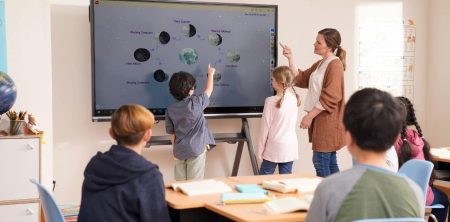In today’s dynamic educational landscape, the role of a teacher extends far beyond traditional textbook instruction. Modern educators constantly seek innovative tools to engage young minds, and kids animated shows have emerged as powerful educational allies in contemporary classrooms. These vibrant visual narratives offer more than mere entertainment; they present complex concepts in accessible formats that resonate with young learners. The strategic incorporation of animated content into lesson plans represents a recognition of evolving learning styles and the need for multisensory educational experiences.
Educational researchers have documented numerous benefits when teachers integrate animated content into their curriculum. Studies indicate that information retention increases significantly when visual storytelling supplements traditional teaching methods. The colorful characters and narrative arcs of animated shows create emotional connections that help students remember educational content more effectively. Additionally, these shows often model positive social behaviors, problem-solving strategies, and emotional intelligence—skills that extend far beyond academic achievement but prove essential for holistic development.
The pedagogical value of animated content lies in its ability to simplify complex concepts without sacrificing educational integrity. Abstract ideas in science, mathematics, and social studies become tangible when illustrated through thoughtful animation. For instance, concepts like photosynthesis, mathematical equations, or historical events transform from abstract notions into visual narratives that children can comprehend and recall. This visualization process bridges the gap between theoretical knowledge and practical understanding—a challenge many educators face with traditional teaching methods.
Moreover, animated educational content addresses the diverse learning needs present in every classroom. Visual learners benefit from the imagery, auditory learners engage with the dialogue and music, and kinesthetic learners can participate in related activities inspired by the shows. This multi-modal approach supports inclusive education practices and helps teachers differentiate instruction for students with varying abilities and learning styles. By providing multiple entry points to information, animated content democratizes the learning experience.
The strategic use of animated shows also cultivates critical media literacy skills essential for today’s digitally immersed generation. When teachers guide discussions about animated content, they help students develop analytical thinking, questioning habits, and discernment about media messages. These conversations teach children to be active, critical consumers rather than passive viewers—a crucial distinction in our media-saturated environment. The guided analysis of animated stories lays the foundation for more sophisticated media literacy skills that will serve students throughout their academic and professional lives.
Cultural representation in animated content offers another valuable dimension for classroom learning. Contemporary animated shows increasingly feature diverse characters, cultural practices, and global perspectives. Teachers can leverage this diversity to foster cultural awareness, empathy, and global citizenship. When students see various cultures represented respectfully in animated content, they develop appreciation for diversity and recognition of our shared humanity. These early exposures to cultural difference through the safe medium of animation help cultivate the inclusive mindsets necessary for our increasingly interconnected world.
Language acquisition represents another significant benefit of quality animated programming in educational contexts. The clear pronunciation, contextual visual cues, and repetitive language patterns in many animated shows create ideal conditions for vocabulary development and language learning. For English language learners particularly, animated content provides accessible entry points to new vocabulary and grammatical structures. Teachers have reported that strategic use of captioned animated content can accelerate language acquisition while maintaining student engagement and reducing anxiety associated with language learning.
Despite these benefits, educators must exercise discernment when selecting animated content for classroom use. Not all animated programming offers equal educational value, and teachers must evaluate shows for age-appropriateness, accuracy of information, and alignment with learning objectives. The most effective educational use of animation occurs when teachers preview content, prepare guiding questions, and facilitate reflective discussions that deepen student engagement with the material. This thoughtful integration transforms passive viewing into active learning experiences.
Parents often express concerns about screen time in educational settings, making teacher-parent communication essential when incorporating animated content. Effective educators explain the pedagogical rationale behind using animation, detail the learning objectives addressed, and suggest ways parents can extend these learning experiences at home. This transparent communication builds trust and partnership between teachers and families while ensuring consistency in educational approaches across environments. When parents understand the intentionality behind classroom viewing, they often become supportive of these innovative teaching methods.
Looking toward the future, emerging technologies like augmented reality and interactive animation promise to further revolutionize how teachers utilize animated content. These advancements will likely enable more personalized learning experiences, greater student agency, and deeper engagement with educational material. As these technologies become more accessible to schools, forward-thinking educators will need professional development opportunities to effectively integrate these tools into their teaching practice. The evolution of educational animation continues to expand the possibilities for engaging, effective instruction in tomorrow’s classrooms.

